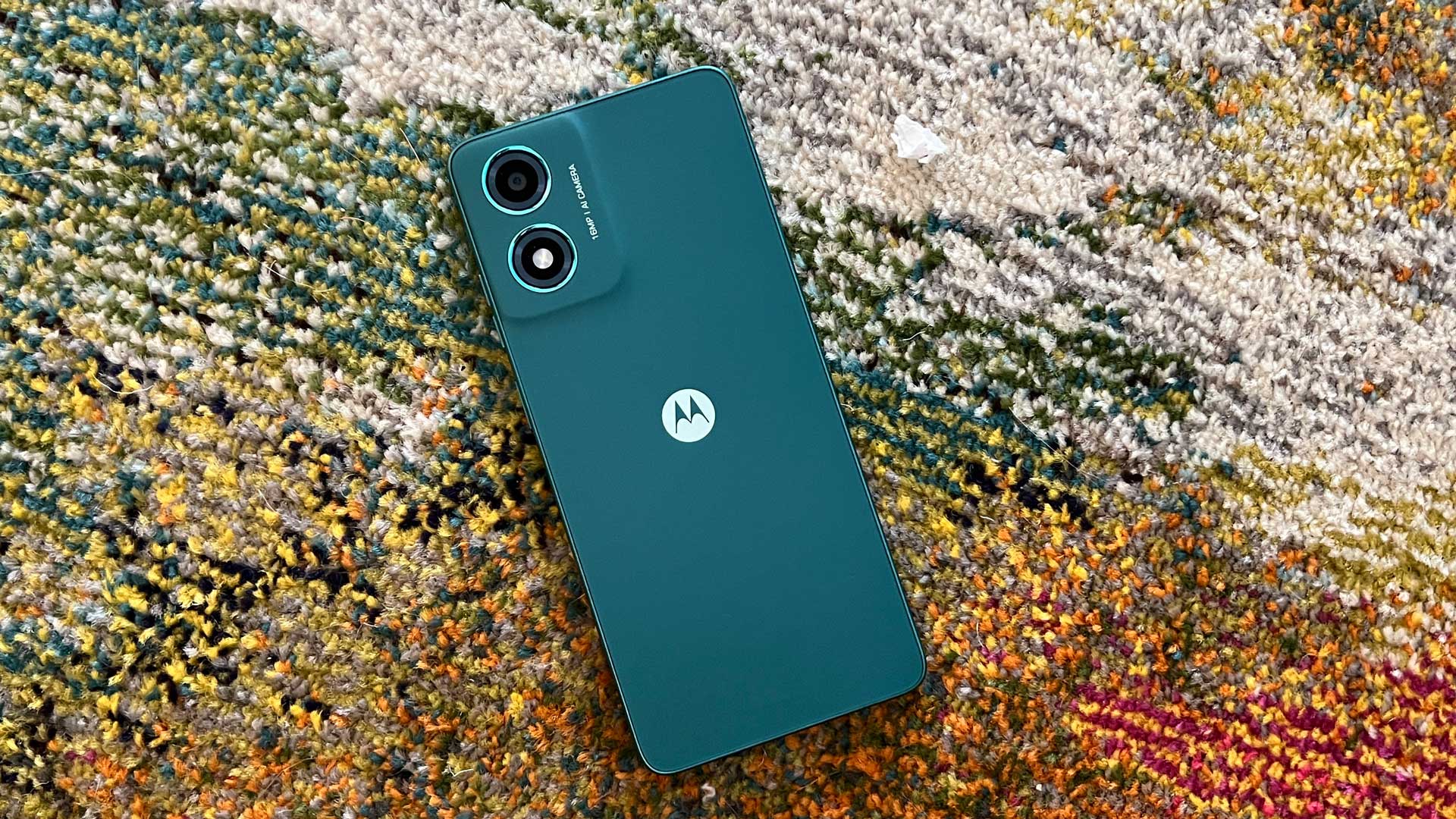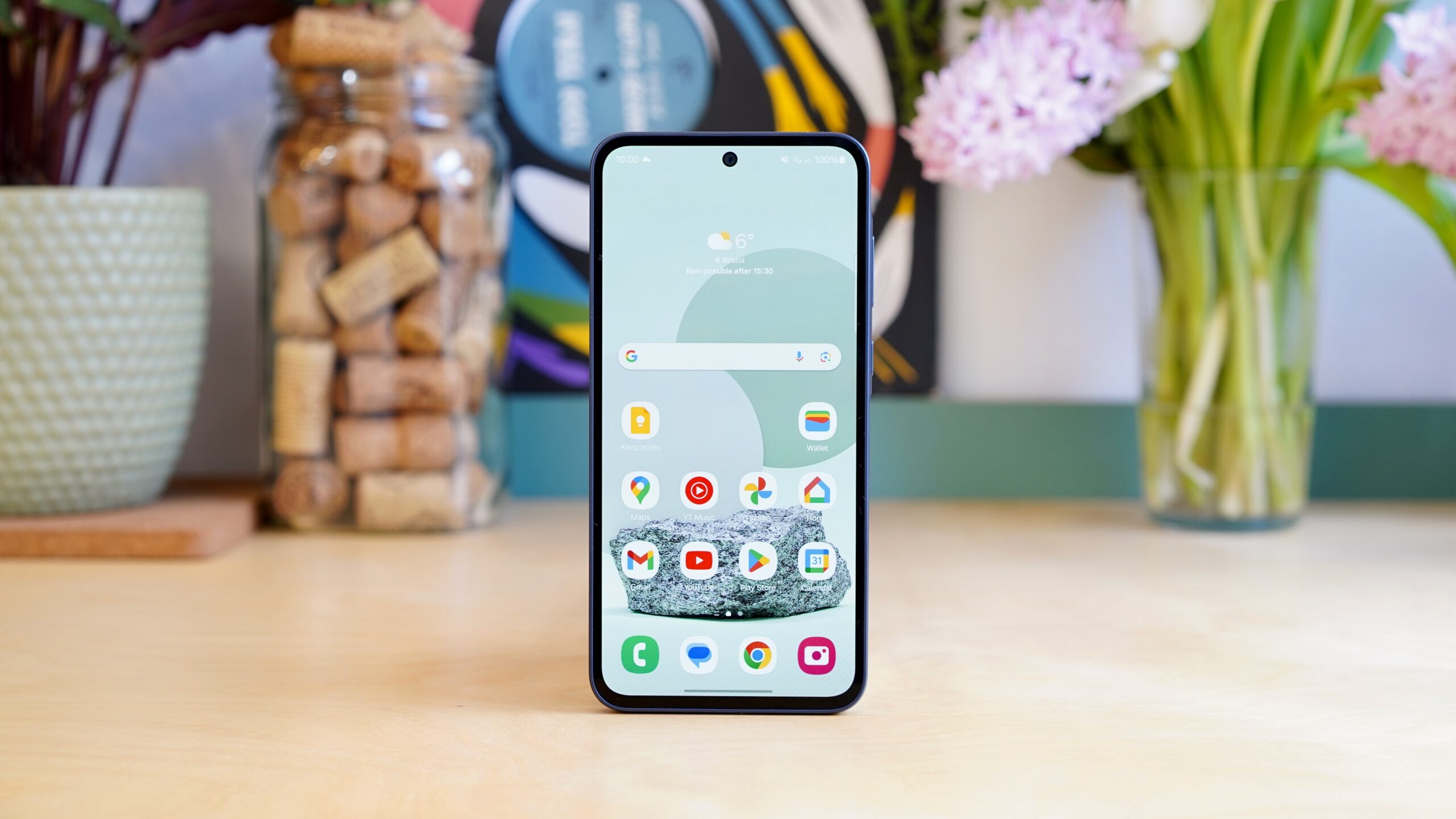Google Pixel 7 Pro Review
The Android phone you'll want to own, even in 2024

Verdict
The Google Pixel 7 Pro is a strong value proposition compared to other big smartphones, especially following its big price drop. It has a great camera, a smooth screen and a suite of software features that’ll make switching hard.
Pros
- Excellent camera and loads of clever camera tricks
- The best version of Android on the market
- Priced well for the European market
Cons
- Charging could, and should, be faster
- Very glossy finish and some odd design elements
- Not a huge upgrade on the Pixel 6 Pro
Availability
- UKRRP: £849
- USARRP: $899
- EuropeRRP: €899
- AustraliaRRP: AU$1298.99
Key Features
- Three great rear camerasStrong sensors and Google’s excellent processing make this a great camera phone
- Smart chipsetThe Tensor G2 chip powers a lot of the clever AI elements
Introduction
The Google Pixel 7 Pro is hardly a cutting-edge phone in 2024, having already been succeeded by the Pixel Pro 8, while rumours indicate that the Pixel 9 could soon be on the horizon too.
This doesn’t mean the Google Pixel 7 Pro isn’t a worthwhile buy though. It’s seen a big price drop in recent years, and can be often found with a major discount during big sale events.
And while the Google Pixel 7 Pro launched back in October 2022, it’s not quite as outdated as you may expect. The camera remains excellent, the design is unchanged and it’s only one generation behind in terms of the processor.
The biggest sticking point is the existence of the Google Pixel 7a, which is much cheaper and offers many similar specs including that 90Hz display and Tensor G2 chipset.
Design
- Three colour options
- Bright, crisp 6.7-inch slightly curved display
- Ergonomic build, even at this size
The Google Pixel 7 Pro is more of a revision of that formula rather than a drastic step forward compared to the Pixel 6 series. It’s a very curvy phone, and one that feels very nice and comfortable to hold even though it’s taller than an iPhone 14 Pro Max.
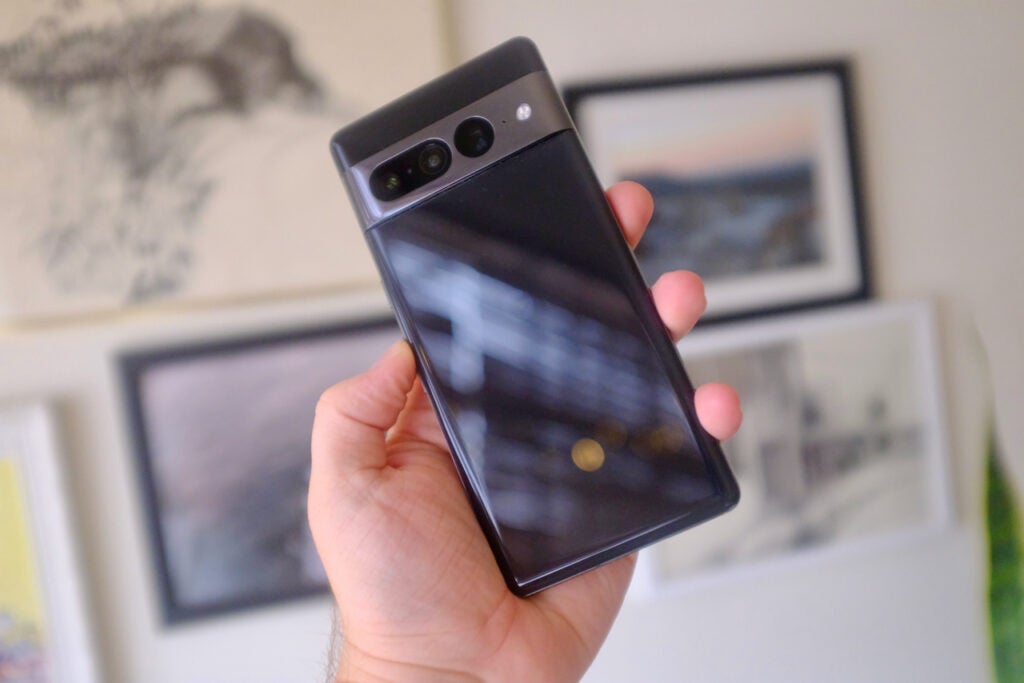
The standout design trait is the camera visor, or Camera Bar as Google calls it, which runs side-to-side and covers the three camera sensors on the back. This contrasts with the colour of the phone’s very glossy back, with my Obsidian review unit having an overall black colour scheme and a shiny silver visor. It looks nice, and this darker black colour is far nicer than the option offered with the Pixel 6 series, which felt more grey.
As my colleague Peter Phelps noted in his Pixel 7 review, the Camera Bar is a shelf for dust and debris. Stuff just gets caught in there throughout the day and it can be a pain to consistently wipe it clean. I think most people will just slip on a case and forget about it, though.
Alongside Obsidian there’s a silver option and another called Hazel, this is the standout of the bunch for me with gold accents and a grey-tinged back. Google also said the 7 Pro is made from around 19% recycled materials.
The Pixel 7 Pro has an IP68 rating for protection from water and dust, a USB-C port on the bottom for charging and an in-display fingerprint sensor that, unlike the version used on the Pixel 6 Pro, actually works well. Google has also added face unlock – this remains software-based, without any of the skills of the iPhone’s Face ID – which is a welcome addition for even quicker unlocks.
In terms of the design, there is very little separating the Google Pixel 7 Pro from the more expensive Pixel 8 Pro. This means you’re getting the same high-quality build at a far more affordable price, although the internal specs do differ.
Screen
- Curved 6.7-inch OLED panel
- Higher peak brightness than Pixel 6 series
- Features a 120Hz refresh rate
The big upgrade for the Google Pixel 7 Pro display is the higher peak brightness. The 6.7-inch panel is brighter than the Pixel 6 Pro for both playing back HDR footage and when you’re in direct sunlight. I played back some HDR footage through Netflix and the picture is good, though not on par, at least to my eyes, with the iPhone 14 Pro.
Apple’s flagship phone still manages to get that little bit extra brightness in certain scenes and depicts a more immersive image. Google has since boosted the peak brightness to 2400 nits for the Pixel 8 Pro phone too. Nevertheless, the Pixel 7 Pro still does an admirable job.
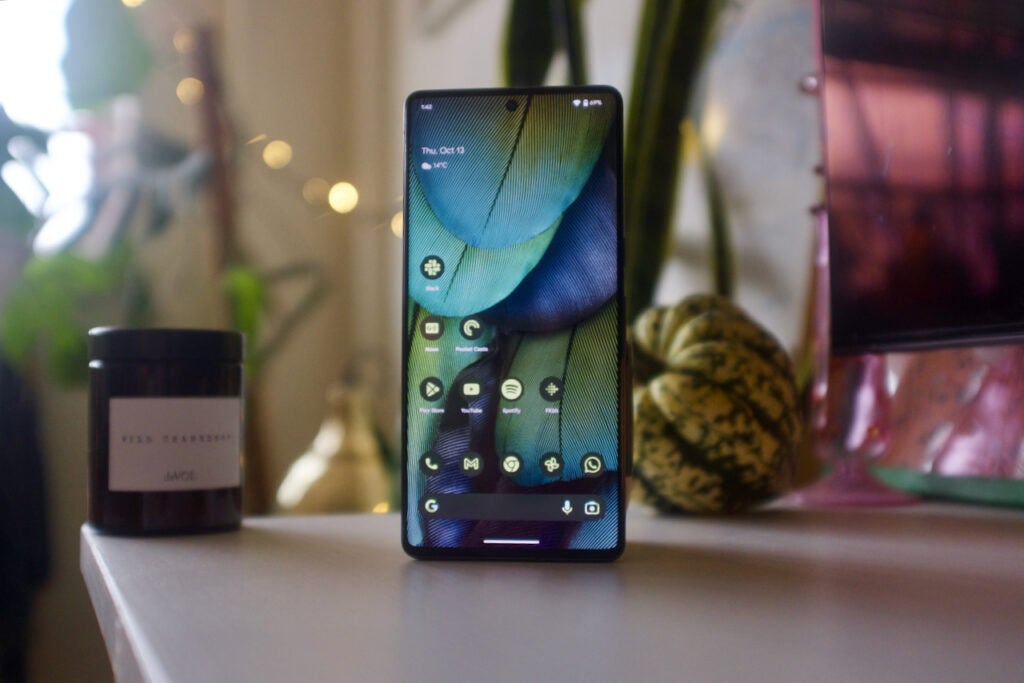
The rest of the screen remains very much the same as the Pixel 6 Pro – which is no bad thing. Google’s Smooth Display is similar to Apple’s ProMotion, allowing the screen to adaptively alter its refresh rate depending on what you’re doing.
For intensive gaming or smooth scrolling, it can ramp up to 120Hz, dropping to 10Hz for simpler tasks. It can’t drop all the way to 1Hz for its always-on display, a feature you’ll find on the iPhone.
The 1440p 6.7-inch OLED panel is very slightly curved on the edges, though not to an annoying amount. Actually, the slight curves make the phone easier to hold than the sharp iPhone 14, especially in these bigger sizes. For the smaller Pixel 7, I am glad Google went with the flatter panel.
Camera
- Three rear cameras, all capable of great shots
- Excellent low-light performance
- Lots of clever AI modes and settings
The Pixel line has produced some of my favourite smartphone cameras since its inception. It has not always been the best overall, but there’s something about the processing of images and Google’s focus on punchy, contrast-heavy shots with wonderful colour reproduction that I enjoy a lot.
It’s hard to choose between the Pixel 7 Pro, the iPhone 14 and the Samsung Galaxy S22 Ultra when it comes to determining the best camera phones as they all take an exceptional picture.
The Pixel 7 Pro retains a similar setup to the Pixel 6 Pro, with only a smattering of hardware changes. There are three cameras on the back: a 50-megapixel wide with an f/1.9 lens, 48-megapixel 120mm telephoto (up from 104mm) and a slightly wider 120-degree 12MP ultrawide. There’s also a 10-megapixel front camera that captures good selfies.
I’ve been shooting with the Pixel 7 Pro for a week, taking hundreds of photos and my love for the style of Pixel images remains. Shots are full of detail, dynamic range and rich, contrast-heavy colour. Reds and greens in daylight photos pop both on the phone’s display and an LCD laptop screen, while the exposure levels are always good.

If you want to tweak your photos in Lightroom or VSCO endlessly, you’ll get better results with the iPhone 14 Pro. Whereas I often felt the shots from the Pixel 7 Pro were good enough just with Google’s clever processing.
A real strength of the Pixel 6 Pro was the reproduction of skin tones, and again the Pixel 7 Pro is the best phone on the market for this. Google’s Real Tone feature helps this no doubt, better representing a diverse range of skin tones and colours.
Google kicked off the recent trend of night photography with its Night Sight mode and while the Pixel 7 Pro isn’t out in front in all instances of low-light performance, it’s still very good. It’s a lot quicker at shooting good photos at night, and while I often preferred the iPhone 14 Pro’s results, the Pixel is a little more reliable if you don’t have time to set up your shots.



Both the ultrawide and zoom cameras produce good shots, too. The ultrawide is a little wider than before, cramming more into shots and giving a better, more distinctive overall image. The telephoto zoom uses both an optical zoom and some AI-infused software trickery to get you closer to an object. Up to 5x zoom the pictures are good, even if there’s a noticeable jump when the software processing takes over – push it further and the quality degrades. The results aren’t on a level with the Galaxy S22 Ultra but they’re a lot better than the iPhone 14 Pro.
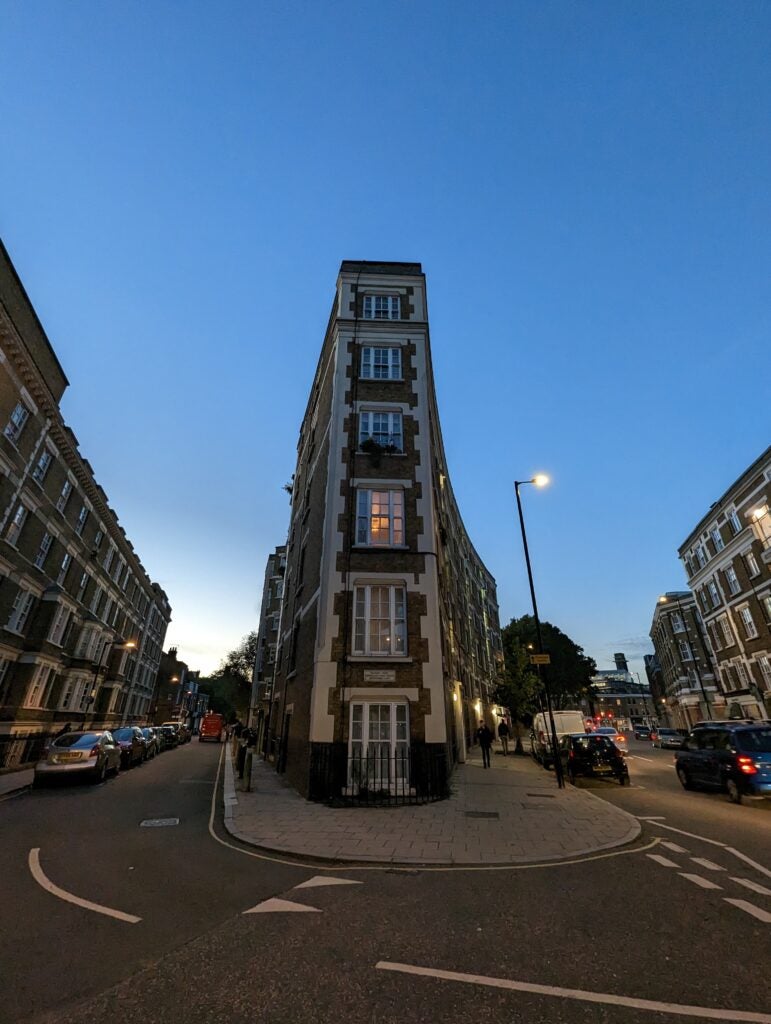
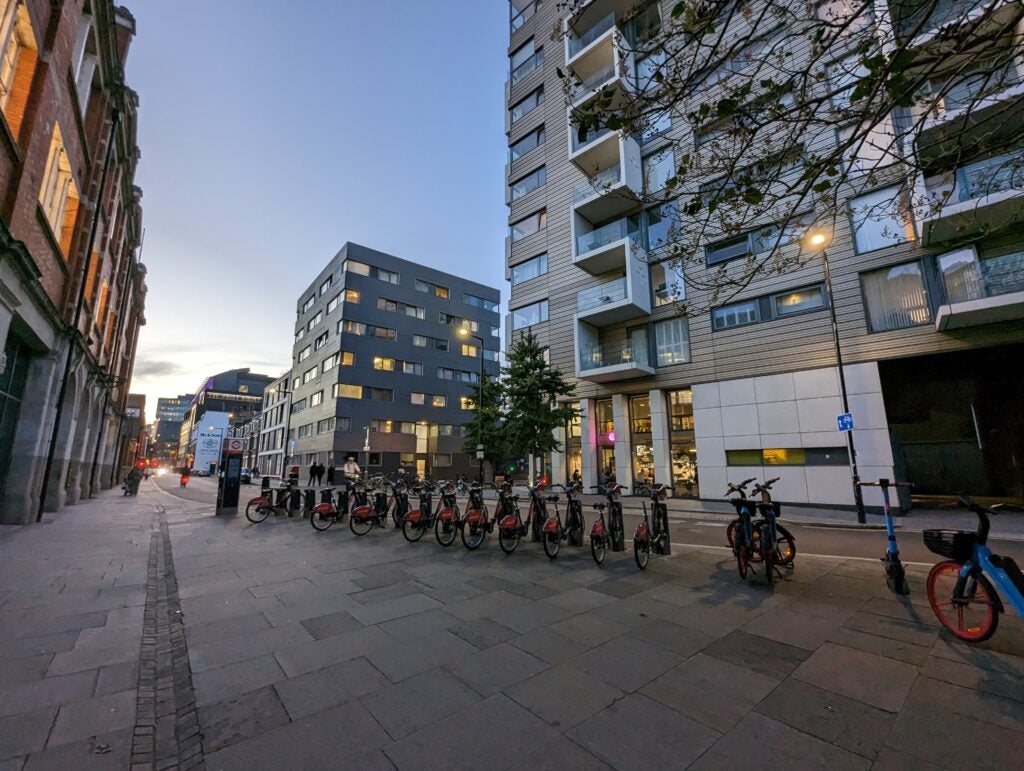
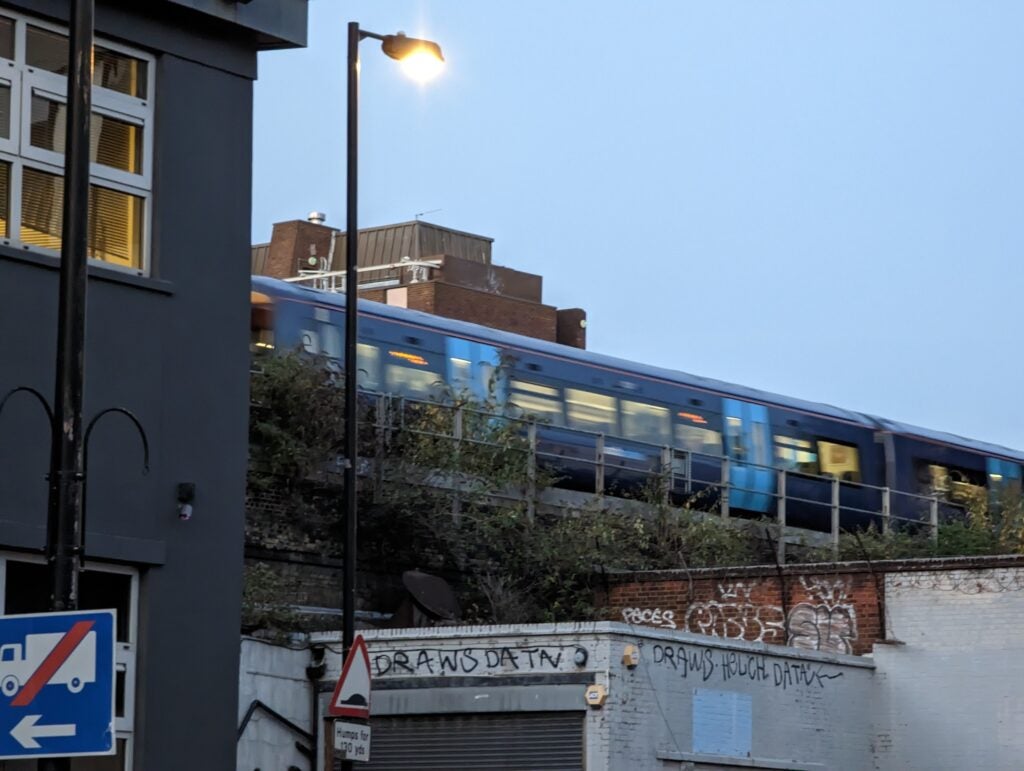
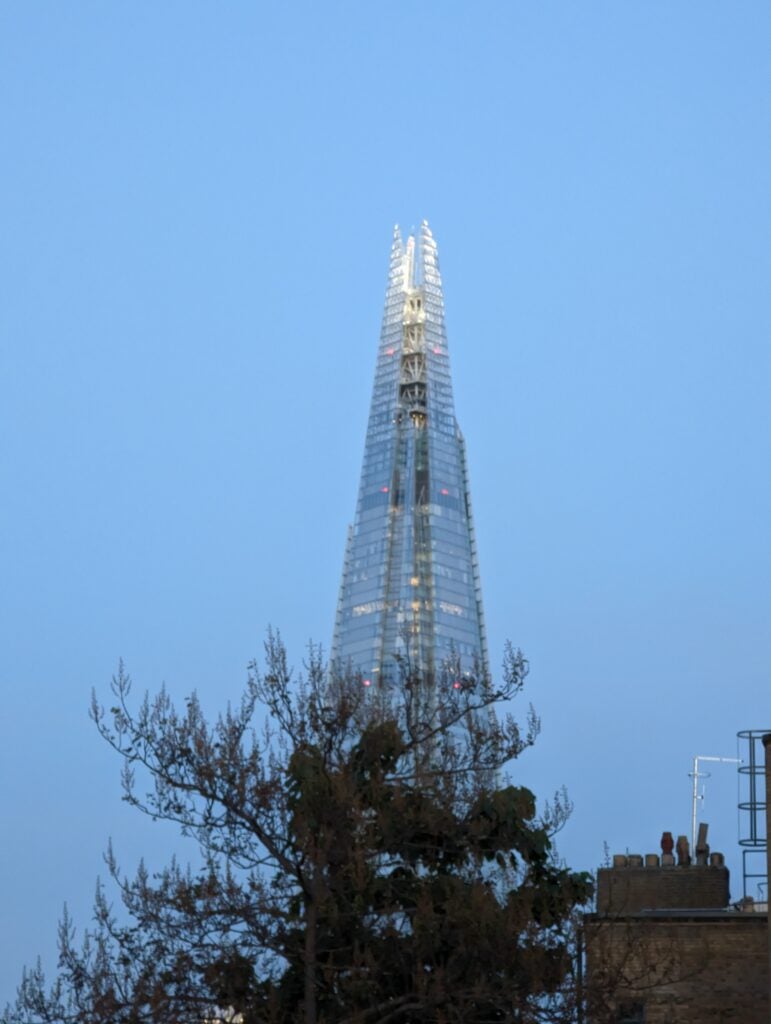
It’s not just the photos that make the Pixel camera great, but the other tricks inside the camera that are simply just not available, to the same quality, elsewhere. One of my favourite new additions is an unblur option that does exactly what it says on the tin – make blurry photos usable. This doesn’t just work with new photos snapped on the Pixel either, and I used it to improve a number of older photos I have previously scanned into my Google Photos library from physical photos.
Of course, it doesn’t work every time – but turning a once useless snap of my dog or one of my grandparents into a sharper one is a trick that will never get old. I’d only assume this feature will get better and smarter with updates, too just as Magic Eraser has done over the past year.
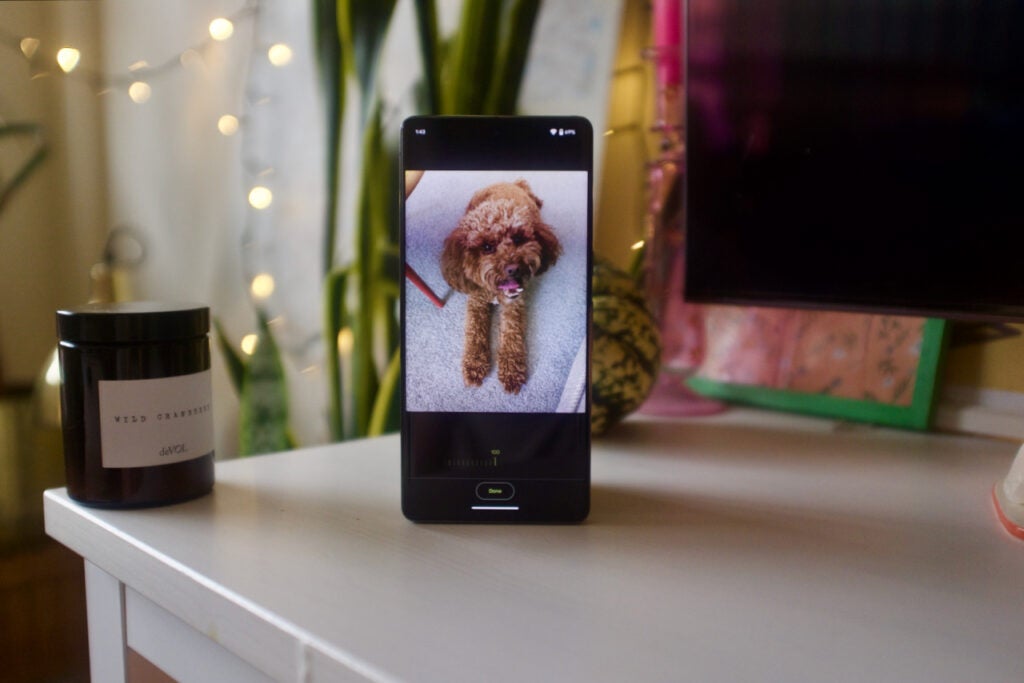
Magic Eraser lets you remove photobombers and erroneous objects from photos and, like Unblur, does a great job in many instances. If there’s a clear object, like a person, in the background then the feature is smart enough to find it and remove it.
Not everything works to the same degree. The new Macro mode, exclusive to the Pro model, is, like similar modes elsewhere, a bit rubbish. Yes, you can pull out more detail by jumping into this mode and getting close to an object – but the results are often worse than the already pretty terrible results from dedicated macro cameras.
Video capture also isn’t the strongest skill of the Pixel 7 Pro. The footage I recorded was perfectly serviceable, with a good range of stabilisation options, but it doesn’t have the same wonderful colours as the photos.
Performance
- Powered by the Tensor G2 chip
- 12GB RAM, up to 512GB storage in some regions
- Capable performer
Google isn’t too fussed about having the most powerful phone on the market, instead looking to make strides in AI performance, powering AI-specific features and improving photo quality as a result.
Google’s Tensor chips were ahead of the curve when it came to AI performance, so even though the Tensor G2 chip inside the Pixel 7 Pro is a little old now, it still holds its own very well. That said, Google’s own Tensor G3 chip offers even better performance, as does the Snapdragon 8 Gen 3 chipset which is found in most flagship Android phones in 2024.
There’s a lot of this phone you probably wouldn’t think is powered by the Tensor G2 but actually is – from the Real Tone and Face Unblur camera skills to unmatched translation and voice transcription skills, I would honestly take these benefits over a few more points scored in a synthetic benchmarking app like Geekbench.
The Recording app is something I miss whenever I am not using a Pixel phone. This is the most accurate transcribing and voice recording tool I have ever used, seamlessly turning audio conversations into perfect text without needing an online connection. The Pixel’s auto-captioning is good too, even if it can often fall a little behind faster-moving videos.
There are plentiful other AI features powered by Tensor. The phone can, in some regions, answer spam calls or turn those annoying automated telephone services into text so you’re not left waiting to find out whether you need to press one, two or three.
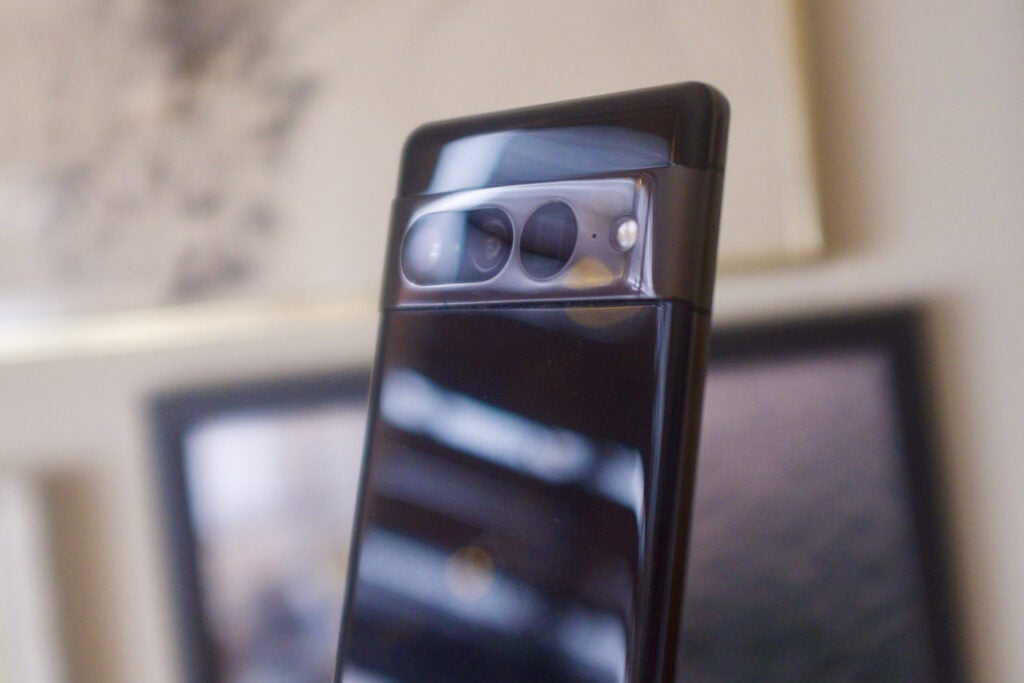
Artificial intelligence aside, the Pixel 7 Pro’s software remains full of unique touches. For instance, the Now Playing feature quietly shows you any song playing in your vicinity on the lock screen and saves them all for you to look back on. This is like Shazam, but you don’t need to even think about opening an app.
Widgets were a big focus of Android 12, but they still remain far below what’s available on iOS. Google-designed ones aside, widgets for the apps I tend to use on a daily basis felt like they were built five years ago and not touched since.
Even though the focus might not be on speed, the Pixel 7 Pro is fast and smooth in a way I have often felt was missing from Pixel phones. Games play just as well, at least in my tests, as they do on Qualcomm-powered phones and even a demanding title like Genshin Impact ran well.
Paired with the Tensor G2 chipset is 12GB RAM (that’s up from 8GB on the Pixel 7) and either 128GB or 256GB of storage. As usual, there’s no expandable storage, so choose wisely when purchasing unless you’re happy to use the cloud.
Unlike the iPhone 14 series, the Pixel 7 Pro supports the faster Wi-Fi 6E standard. More modern phones have since moved onto Wi-Fi 7, but the reality is that most people won’t own a router advanced enough to benefit from either of these wireless standards.
A lot of phones actually forget about the phone aspect, but the Pixel 7 Pro doesn’t. Along with the automation features I mentioned earlier, phone calls here sound fantastic with a good amount of background noise blocked out. The haptic response is great too – giving you lovely little pops of feedback when you hit keys or get a notification. It’s the little things like that just make Pixel phones such a pleasure to use.
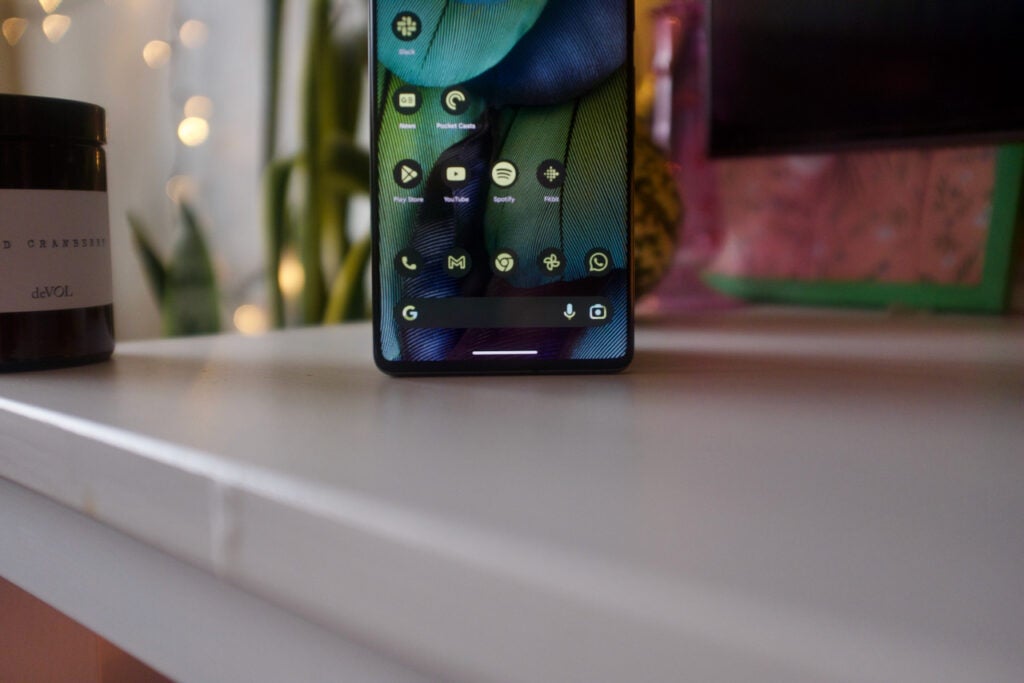
In terms of software updates, Google promises a minimum of five years of security updates and likely four years of proper numbered Android updates. Considering Samsung offers something similar, and Google has full control over all elements of this phone, it would have been nice to have a few years more.
Battery Life
- Very similar endurance to the Pixel 6 Pro
- 5000mAh battery
- No charger included
There’s very little to get excited about with the battery life and endurance of the Pixel 7 Pro. It’s a phone that’ll likely require nightly charges unless you’re willing to severely limit the skills of the device with the new Extreme Power Saver.
This mode might be good for a festival or camping trip when you really need that multi-day battery life, but in general the sacrifices aren’t really worth it to me.
Throughout my week with the Pixel 7 Pro, it’s left me with about 10-15% left at the end of the day, roughly the same as the results I got with the iPhone 14 Pro – but well behind the Pro Max.
This is with the screen set to FHD+, the default setting and the Smooth Display turned on. If you want a sharper picture you can flip it to QHD+ (1440p) and it’ll use about 3-5% more per day.
Google hasn’t advanced much with fast charging tech either, and things aren’t much better with the pricier Pixel 8 Pro. There’s support for chargers up to 30w, though a full charge took me 80-90 minutes and of course there’s no charger in the box. This is a lot slower than many of the best Android phones for charging, with something like the OnePlus 10T going from 0-100% in less than 20 minutes.
Latest deals
Should you buy it?
You want Google’s vision of Android in its best form
The Google Pixel 7 Pro is how Google sees Android and the hardware ties up closely with the smart software and the power of Tensor.
You’re after a smaller phone
The Pixel 7 Pro is big – even more so than the iPhone 14 Pro Max. It’s a shame Google doesn’t offer the same feature set on a smaller phone as Apple does, with the Pixel 7 feeling a little watered-down.
Final Thoughts
The Google Pixel 7 Pro may no longer be Google’s prized flagship phone, but it’s still got a lot going for it following a big price cut. The camera takes very pleasing, contrast-rich shots in all sorts of conditions and the app itself packs numerous AI tricks. Performance is good, while the software experience is great.
The biggest issue is the emergence of the Pixel 7a, which offers very similar specs at a far more affordable price. As a result, it’s probably only worth opting for the Pixel 7 Pro instead if you’ll appreciate the extra screen space and longer battery life. We also suggest checking out our Best Mid-Range Phone guide, as there are plenty of more modern phones available at a reasonable price.
How we test
We test every mobile phone we review thoroughly. We use industry standard tests to compare features properly and we use the phone as our main device over the review period. We’ll always tell you what we find and we never, ever, accept money to review a product.
Tested as main phone for 7 days
Taken hundreds of photos in various conditions
Tested with benchmarking sofrware and actual use
FAQs
Google doesn’t provide a charging plug, just a USB-C to USB-C cable in the box. There’s support for up to 30w charging, so choose wisely if you’re buying a plug.
There are three colours here – Obsidian (black), Snow (white and silver and Hazel (grey and gold)
Google sells a 512GB model in some regions, like the USA, but in the UK there’s only a 128GB and 256GB model.
Trusted Reviews test data
Full specs
Jargon buster
OLED and AMOLED
Types of displays that use self-lighting pixels to provide greater contrast and more vibrant colours than a typical LCD display, as well as sharper blacks.IP68
The most popular and useful level of water resistance. Usually means a device can withstand dust, dirt and sand and be submerged in 1.5m of water for 30m however this can sometimes vary. Read more in our IP68 guide for more.5G
Offering faster download and upload speeds when compared to 4G. Great for game streaming and HDR video playback. Not supported everywhere yet and speeds vary wildly.

